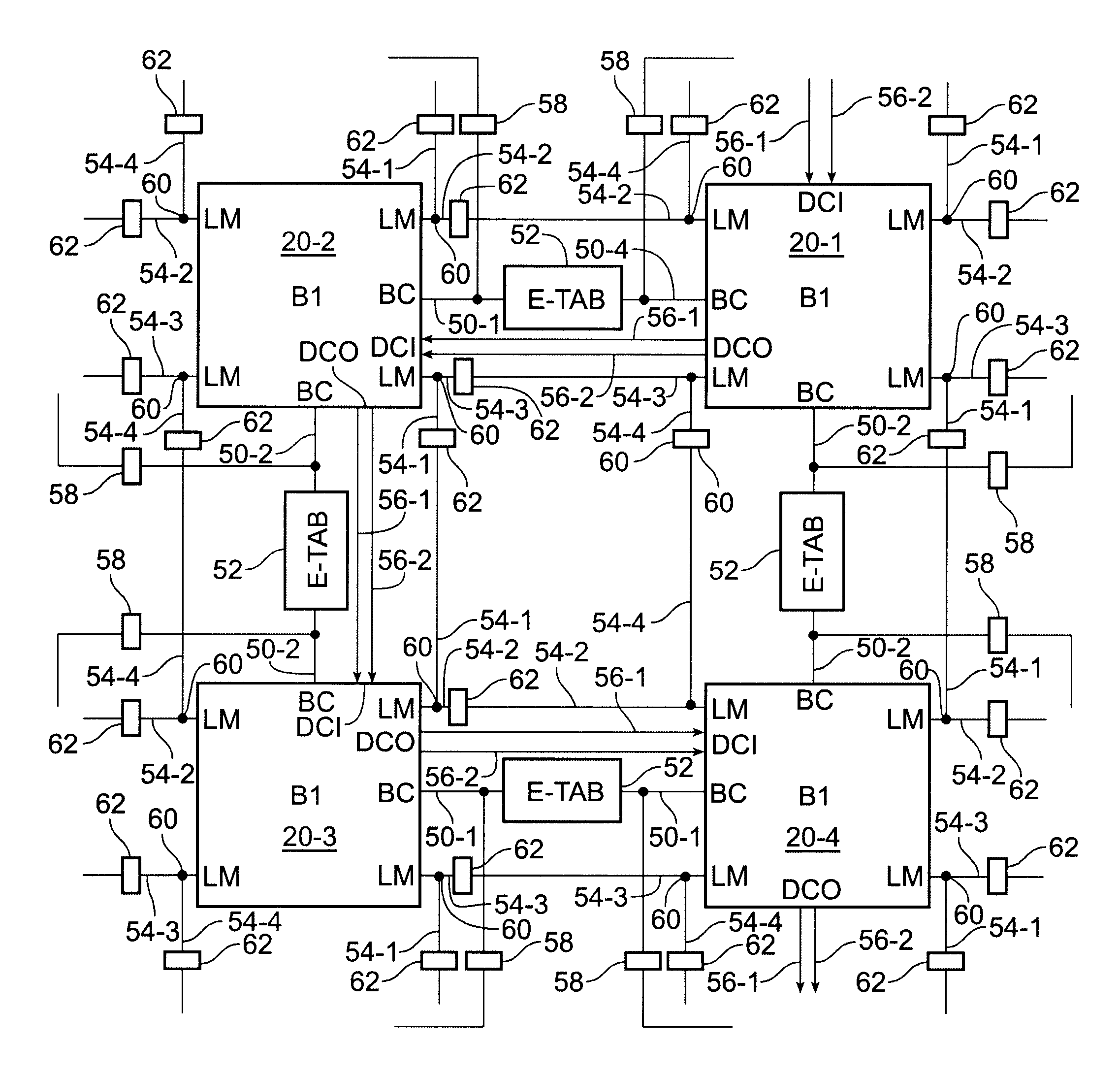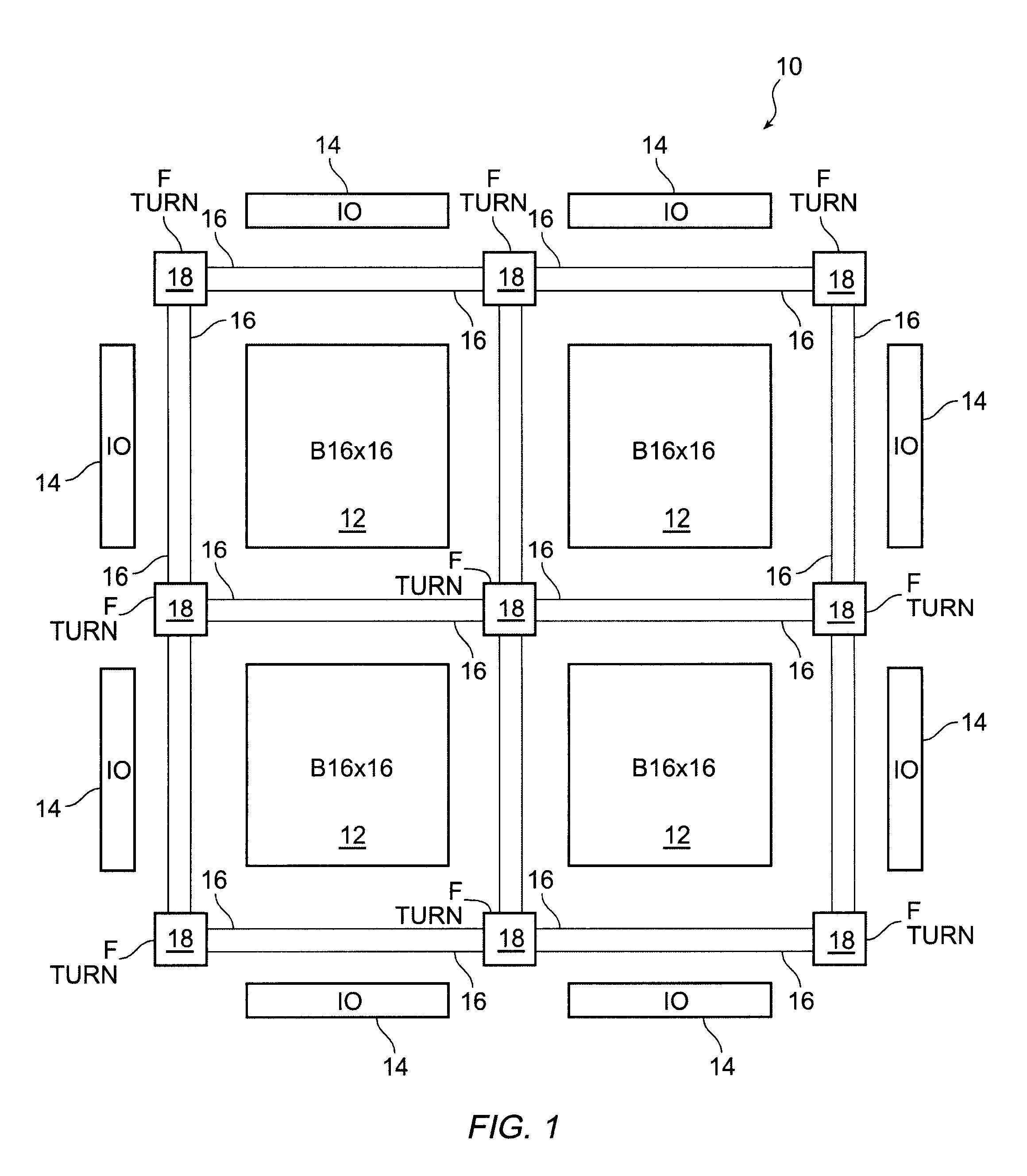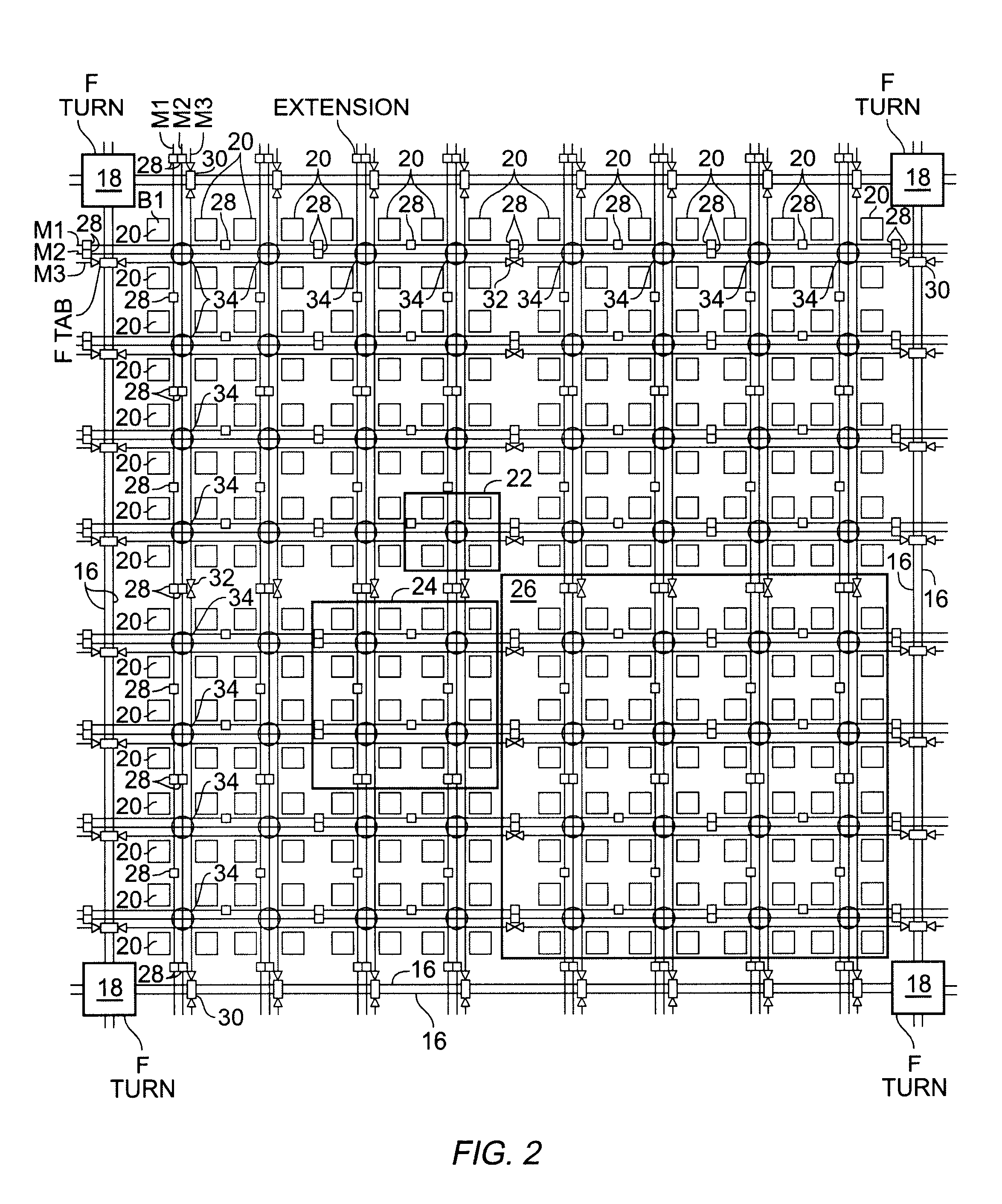Block connector splitting in logic block of a field programmable gate array
a logic block and gate array technology, applied in the field of block connector splitting in the logic block, can solve the problems that the reprogrammable sram bit cannot be provided to connect routing resources, and the place and route of nets in the sram based fpga are difficul
- Summary
- Abstract
- Description
- Claims
- Application Information
AI Technical Summary
Benefits of technology
Problems solved by technology
Method used
Image
Examples
Embodiment Construction
Those of ordinary skill in the art will realize that the following description of the present invention is illustrative only and not in any way limiting. Other embodiments of the invention will readily suggest themselves to such skilled persons.
The present invention is directed to aspects of a semi-hierarchical architecture implemented in an FPGA having top, middle and low levels. In a semi-hierarchical architecture according to the present invention, the three levels of the architecture may be coupled to one another as in a hierarchy or the routing resources in each of the three levels may be extended to similar architectural groups in the same level of the architecture. The semi-hierarchical nature of the FPGA architecture according to the present invention significantly improves the place and route of nets or circuits in the lowest level of the architecture and in the connection of these nets to higher levels in the semi-hierarchical architecture. To better understand the present...
PUM
 Login to View More
Login to View More Abstract
Description
Claims
Application Information
 Login to View More
Login to View More - R&D
- Intellectual Property
- Life Sciences
- Materials
- Tech Scout
- Unparalleled Data Quality
- Higher Quality Content
- 60% Fewer Hallucinations
Browse by: Latest US Patents, China's latest patents, Technical Efficacy Thesaurus, Application Domain, Technology Topic, Popular Technical Reports.
© 2025 PatSnap. All rights reserved.Legal|Privacy policy|Modern Slavery Act Transparency Statement|Sitemap|About US| Contact US: help@patsnap.com



